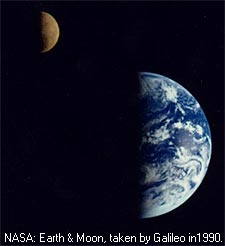Wire Maze Electricity DIY STEM Kit
$9.99$5.55
 The Moon is gradually receding from the Earth, at a rate of about 4 cm per year. This is caused by a transfer of Earth's rotational momentum to the Moon's orbital momentum as tidal friction slows the Earth's rotation. That increasing distance means a longer orbital period, or month, as well.
The Moon is gradually receding from the Earth, at a rate of about 4 cm per year. This is caused by a transfer of Earth's rotational momentum to the Moon's orbital momentum as tidal friction slows the Earth's rotation. That increasing distance means a longer orbital period, or month, as well.